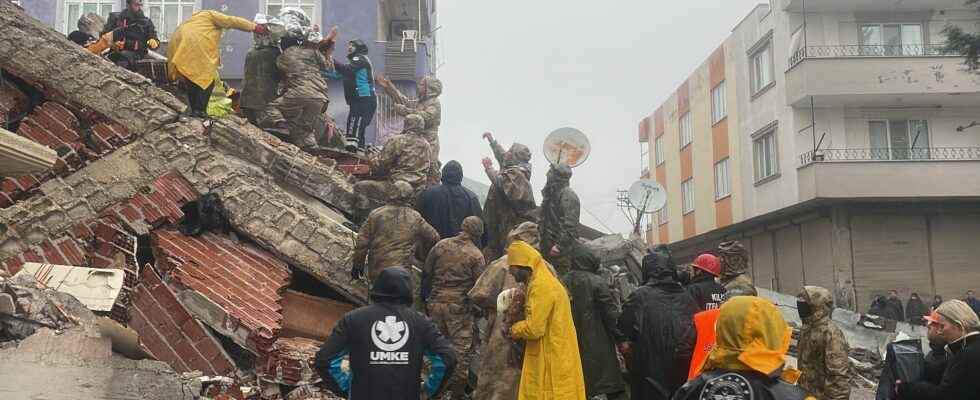The search for survivors continues. A 7.8 magnitude earthquake hit southern Turkey and neighboring Syria on Monday, February 6, killing more than 284 people. in both countries and very significant damage according to data provided by Turkish Vice-President Fuat Oktay. According to him, more than a thousand buildings have completely collapsed, which raises fears of even heavier tolls. The victims are located in seven provinces in Turkey, according to the government agency for disaster management (Afad). In Syria, the victims were recorded in Aleppo, the second Syrian city in the north of the country, as well as in Hama (center) and Latakia and Tartous, on the Mediterranean coast.
At least 2,320 people were injured in the two countries, the same sources said. During the night from Sunday to Monday, Turkish President Recep Tayyip Erdoğan said on Twitter: “We hope to get through this disaster together as soon as possible and with the least possible damage, and we continue our work.”
According to the American seismological institute USGS, the earthquake took place at 04:17 local time (01:17 GMT), at a depth of approximately 17.9 kilometers. The epicenter is located in the district of Pazarcik, in the province of Kahramanmaras (southeast), about 60 km as the crow flies from the Syrian border. This earthquake is the largest in Turkey since the earthquake of August 17, 1999, which caused the death of 17,000 people, including a thousand in Istanbul. 28 people were killed in the province of Adiyaman, announced Monday its governor, reporting a hundred buildings collapsed.
At least six others were killed in Diyarbakir province, its governor said. “We are hearing voices here and there. We believe that maybe 200 people are under the rubble,” said a rescuer dispatched to a destroyed building in Diyarbakir, according to images broadcast on the channel. NTV.
Tremors felt in Lebanon and Cyprus
According to Afad, the earthquake that occurred overnight had a magnitude of 7.4 and a depth of 7 km. Note that the tremors, felt throughout the south-east of the country, were also felt in Lebanon and Cyprus, according to AFP correspondents. Buildings have been destroyed in many cities in the south-east of the country, according to images broadcast by the Turkish media, raising fears of a much heavier toll. An AFP correspondent in Diyarbakir, a large city in the south-east of the country, saw a collapsed building, with rescuers hard at work trying to extricate people from the rubble.
On Twitter, Turkish Internet users shared the identity and location of people trapped under the rubble in several cities in the south-east of the country. Adana city mayor Zeydan Karalar said two 17-storey and 14-storey buildings were destroyed, according to TRT. He also called on residents to take their belongings and go to the assembly areas.
“All our teams are on alert. We have issued a level four alarm. This is a call, including for international help,” Turkish Interior Minister Süleyman Soylu told the Haberturk channel. “Our teams are on alert to rescue the survivors,” also said the Syrian White Helmets, rescuers engaged in rebel areas in Syria, on Twitter. “Our teams are on high alert to respond to the hundreds of wounded and trapped under the rubble. Dozens of victims have been recovered,” they explain on the social network. 50 aftershocks were recorded in Turkey, according to Afad.
The governor of Gaziantep province asked residents to gather outside despite the cold, while the head of Diyanet, the Turkish public body responsible for supervising worship, called on Turks in need to find refuge in mosques. Turkish rescuers and civil defense as well as Syrian firefighters were at work Monday morning to try to extract possible victims from the rubble, according to local media.
Turkey is located on one of the most active seismic zones in the world. At the end of November, a magnitude 6.1 earthquake struck northwestern Turkey, injuring around 50 people and causing limited damage, according to the Turkish emergency services. In January 2020, a magnitude 6.7 earthquake struck the provinces of Elazig and Malatya (East), killing more than 40 people. In October of the same year, a magnitude 7 earthquake in the Aegean Sea killed 114 people and injured more than 1,000 in Turkey.
